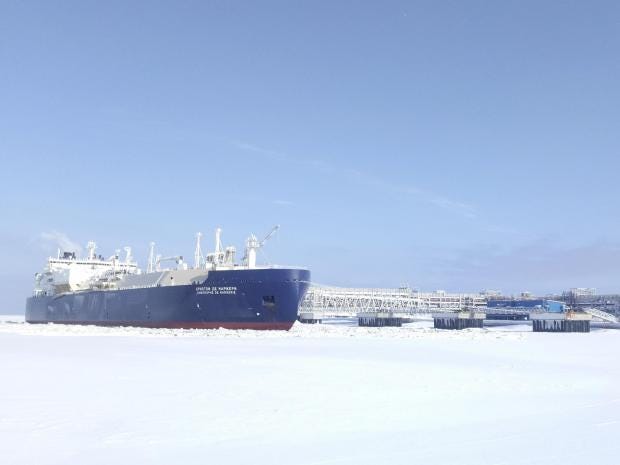High hopes among Scandinavian backers of ‘Ice-Silk Road’ east
Report submitted on vital 'Arctic railroad' link that could be part of a 'maritime silk route in the north'
Supporters of an ambitious plan to build a railway between Rovaniemi in Finland and Kirkenes in Norway that would serve as an Arctic gateway for China’s Belt and Road project have submitted a report to Finnish and Norwegian authorities and are hopeful the project will be approved by early March.
The report, titled “Vision for an Arctic Railroad,” was delivered to Finnish and Norwegian transport officials on January 19. It’s one of several proposed Arctic rail links. “The national review will be finalized on February 28 and hopefully we will know who will win on March 1,” Timo Rautajoki, a representative of the Lapland Chamber of Commerce told Sør-Varanger Utvikling, a local development organization.
that a group of Finnish business leaders and academics have proposed building a US$3.4 billion “Arctic Corridor” railway that would connect Northern Europe with China and Arctic Ocean deep-water ports. The rail link would connect the city of Rovaniemi in northern Finland with the Norwegian port of Kirkenes on the Barents Sea.
Kirkenes is the closest Western port to Asia along the Arctic’s Northern Sea Route. Under the plan, ships could move goods from China as well as oil and gas from Arctic fields in Russia westward along this northern route to Kirkenes. Cargos would be offloaded to the railway and sent southward through rail connections to Scandinavia, Helsinki, the Baltic states, Poland and St. Petersburg in Russia.
If officials are positive about the technical and feasibility issues, Finland and Norway are expected to begin discussing the project with China and other participants.
Project backers include the Finnmark County Municipality, Sør-Varanger, and Kirkenes Næringshage, a local business organization in Norway, as well as others.
Shorter than Suez
One of the big selling points for a “maritime silk route in the north” is that it would sharply reduce the distance, time and cost of cargo routes between Asia and Europe, which currently rely on the Suez Canal. The report reckons there will be a 40% reduction in sailing distance if the Northern Sea Route is used to connect Northern Europe (from Germany northwards) with China, Taiwan, South Korea and Japan.
There would likewise be a 20% cut in fuel consumption versus Suez with a resulting favorable environmental impact, according to the report.
“The new sea route, combined with the Arctic railway, would save on both time and emissions,” Timo Lohi, a spokesman for the Arctic Corridor project, told Asia Times.
Finland’s Arctic Corridor project. Illustration: Arctic Corridor
Supporters say the Arctic rail project’s impact on trade will be equally huge. Assuming the railway can accommodate 10% of the current container trade from Asia to Northern Europe, the report projects that 10 southbound trains could leave Kirkenes daily for Finland and other southern points. Annually, this would amount to 550,000 containers trans-loaded per year – or 37,000 containers per month. The same number of containers (either empty or with export cargo) could be sent on the return leg to Asia.
Return cargo to Asia from Finland could comprise timber and biofuels. Norway boasts large volumes of mineral ore as well as products from its aquaculture and fisheries industries that would interest Asian clients.
The cargo estimates are based on a current 7.4-month Arctic navigation season in which the Arctic Ocean is sufficiently ice-free to be navigated by commercial shipping. Accessibility hits a high point during the summer months. But global warming is reducing ice floes in the region to historic lows, suggesting that the Northern Sea Route might eventually be navigable in winter.
“Climate change will melt ice and transport through the Northern Sea Route will become more profitable,” Lohi noted.
Container traffic between Asia and Europe is also expected to jump nearly threefold by 2040. “So even a share of 3-4% of the combined container imports from China, Taiwan, South Korea and Japan to Northern Europe would generate comprehensive activity at the Port of Kirkenes and on an Arctic railway to Rovaniemi,” the report said.
Officials on board
The Arctic rail project appears to have the support of Finnish and Norwegian officials.
he’s “very positive” towards the Finnish plan to build an Arctic rail link to Belt and Road.
Finnish Transport and Communications Minister Anne Berner said recently that preparations for the project will continue if official reaction to the January 19 report is positive.
that talks last year between Chinese President Xi Jinping and Russian President Vladimir Putin have created momentum for an “ice-Silk Road.”
















